Bruck Mountain, Texas
Research Natural Area
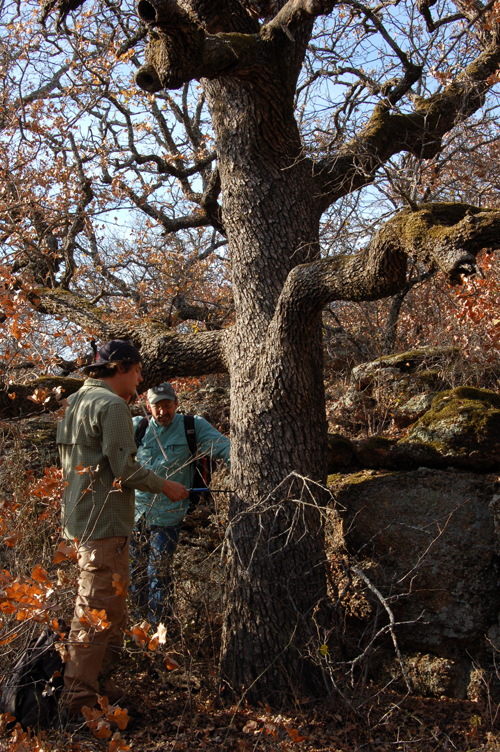
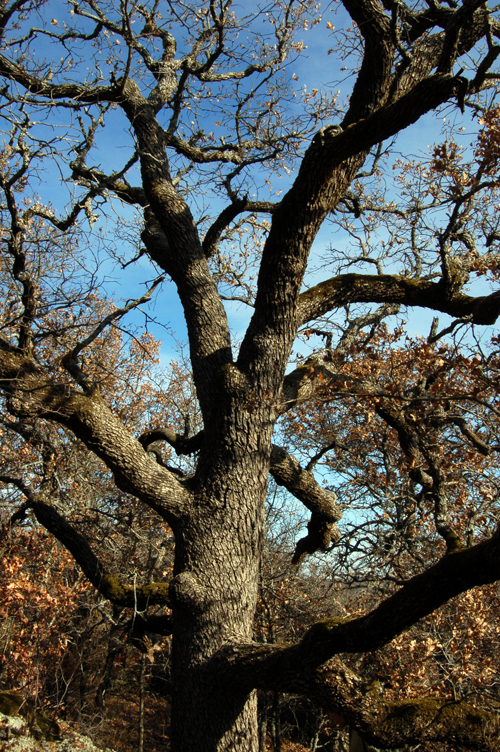
This is a privately owned Cross Timbers woodland and glade in the steep, rocky uplands of southern Jack County, Texas (Figures 1-4). The canopy woodlands are dominated by post oak (Quercus stellata) and blackjack oak (Quercus marilandica). The property includes over 900 acres, some of which is relatively undisturbed old-growth Cross Timbers. This site contains many post oak over 200 years old, very old blackjack, and a few cedar elm (Ulmus crassifolia), juniper (Juniperus sp.), and chittamwood (Bumelia lanuginosa; see Table 1). Most of the level terrain in the vicinity has been converted to rangeland, and a number of dirt roads, fence lines, power-line cuts, and abandoned oil pads mark the property. The best areas of old-growth at this site seem to be found on the steepest and rockiest terrain, where large boulders of Pennsylvanian age conglomerate make access difficult (see Figure 3 and 4). However, small areas of relatively undisturbed old-growth on the flat ridge top were also found (Figure 2), which are rare in the western Cross Timbers.
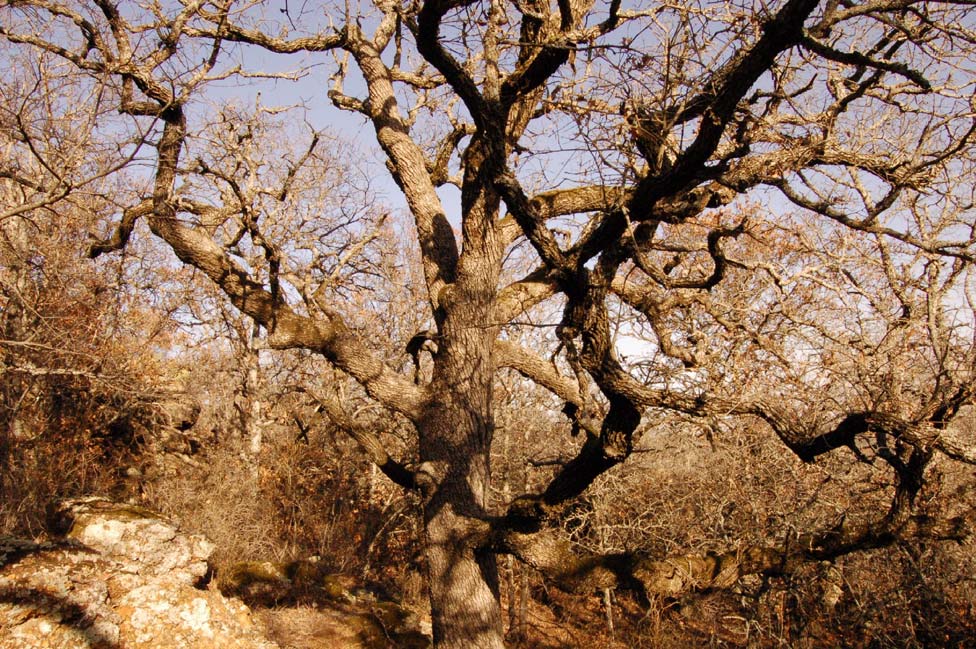
Figure 1. A full-canopy 200+-year-old post oak survives near the escarpment at Bruck Mountain.
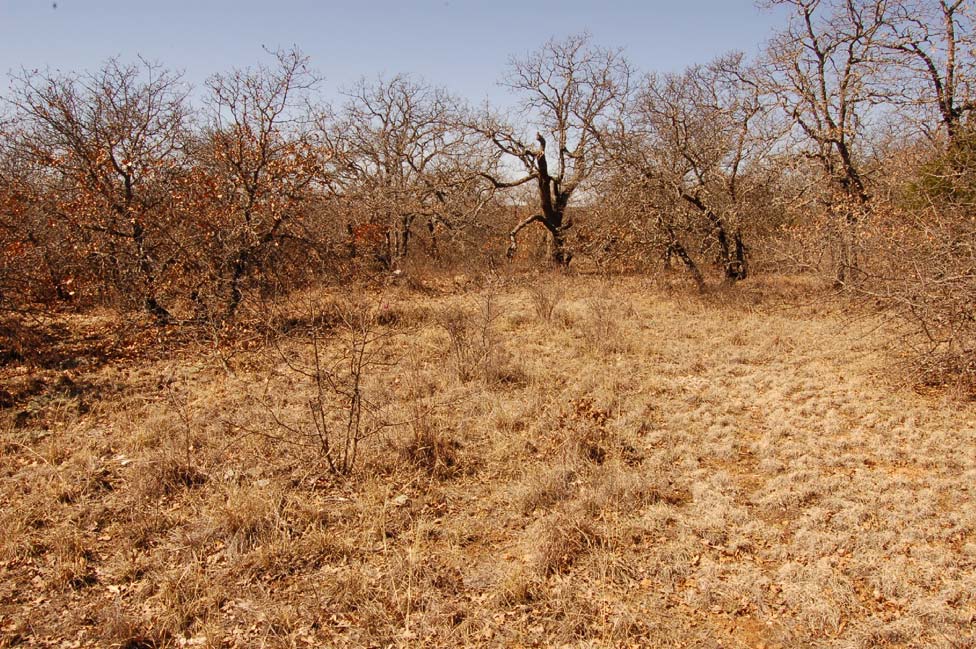
Figure 2. A view (north) of the low-stature old-growth oak woodlands and glade grasslands in the SW quadrant of the fixed plot (see Figure 5). Post oak dominates the plot, some of which are over 200 years old. Heart rot often affects older oaks making their true age difficult to determine.
A 0.25 hectare (50x50m) plot was installed on the level ridge top near the escarpment in an area with old-growth oak woodlands and grassy glade openings (February 23, 2007). All stems ≥10 cm diameter at breast height (DBH) were mapped to sub-meter accuracy using a Trimble GeoXM GPS. All stems <10 cm DBH were identified and counted. All post oaks ≥10 cm DBH were cored using a Swedish increment borer to obtain age structure, recruitment, and tree-ring data. The results of the stem mapping are presented in Figure 5, and Tables 1 and 2. Note the dominance of canopy post oak and the near absence of juniper, which help document the relatively undisturbed conditions at this site (Tables 1 and 2).
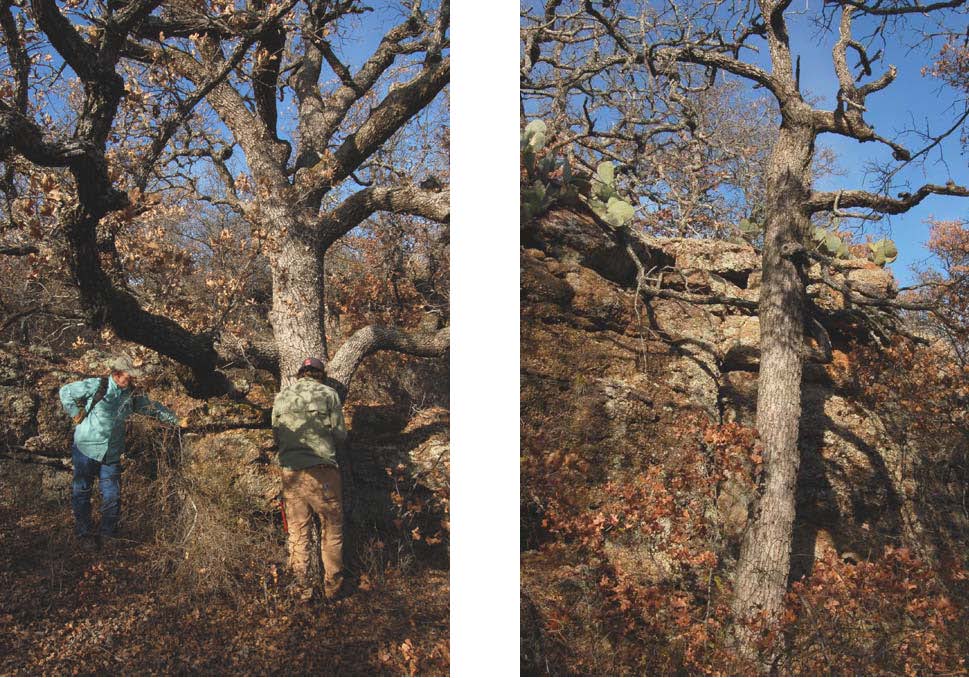
Figure 3 (left). A core sample extracted from this post oak was dated from 1782-2006. The innermost ring was not recovered, but the tree probably germinated ca-1770.
Figure 4 (right). This old-growth post oak is located just below the escarpment of Pennsylvanian age conglomerate that dominates the geology at this site. Note the prickly-pear cactus (Opuntia humifusa) on the arid escarpment.
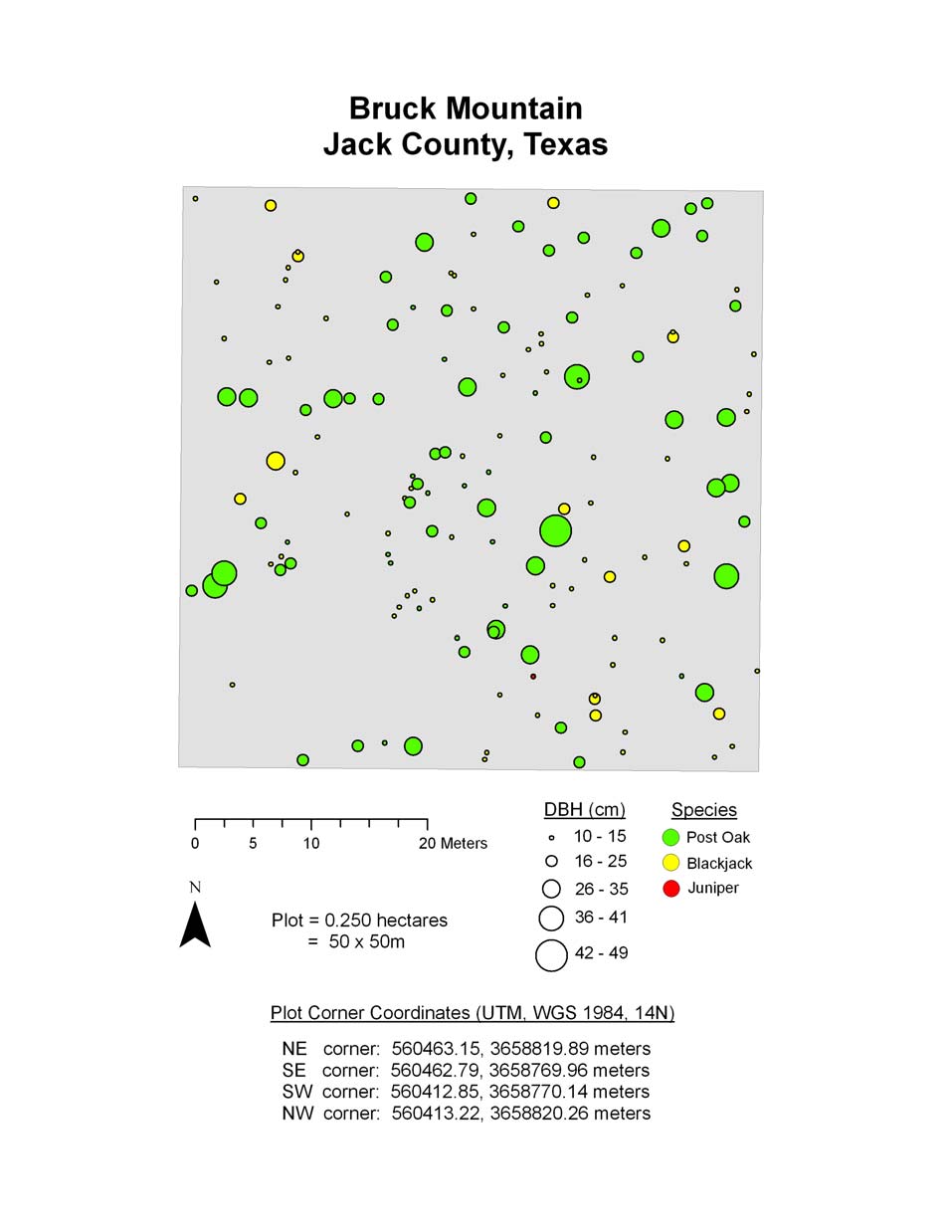
Figure 5. This is an illustration of the 0.25-hectare stem map installed in the old-growth woodlands at Bruck Mountain. This plot is located on the level ridge top near the escarpment. Tree diameters are exaggerated to more clearly illustrate species composition. The glade openings are dominated by native grasses (e.g. SW quadrant). The UTM coordinates for the four corners are listed. The elevation of the plot is approximately 440 meters above sea level.
Table 1. The species composition of all trees ≥10 cm DBH mapped within the 0.25 ha fixed plot is tabulated. A total of 152 trees were counted, and blackjack oak was the most abundant (78 trees with a relative frequency of 51%). However, the post oak trees tend to be much larger, so they dominate the site [basal area = 3.158 m2, and a relative dominance of 75% (relative dominance = total basal area of one species / total basal area of all species)].
| Species | Number of Trees | Relative Frequency | Total Basal Area (m2) | Relative Dominance |
|---|---|---|---|---|
| Post Oak | 73 | 0.48 | 3.158 | 0.75 |
| Blackjack | 78 | 0.51 | 1.019 | 0.24 |
| Juniper | 1 | 0.01 | 0.016 | 0.01 |
| Total | 152 | 1.00 | 4.193 | 1.00 |
Table 2. The species composition for all stems <10 cm DBH within the 0.25 fixed plot is listed. A total of 613 stems were counted. Blackjack oak clearly dominates the sapling layer, with 478 stems and a relative frequency of 77%. Chittamwood is the second most common species, but no chittamwood ≥10 cm DBH were mapped in the fixed plot. Only two juniper saplings were found on the plot.
| Species | Number of Stems | Relative Frequency |
| Blackjack | 478 | 0.77 |
| Chittamwood | 72 | 0.12 |
| Post Oak | 42 | 0.07 |
| Cedar Elm | 13 | 0.02 |
| Unknown | 6 | 0.01 |
| Juniper | 2 | 0.01 |
| Total | 613 | 1.00 |